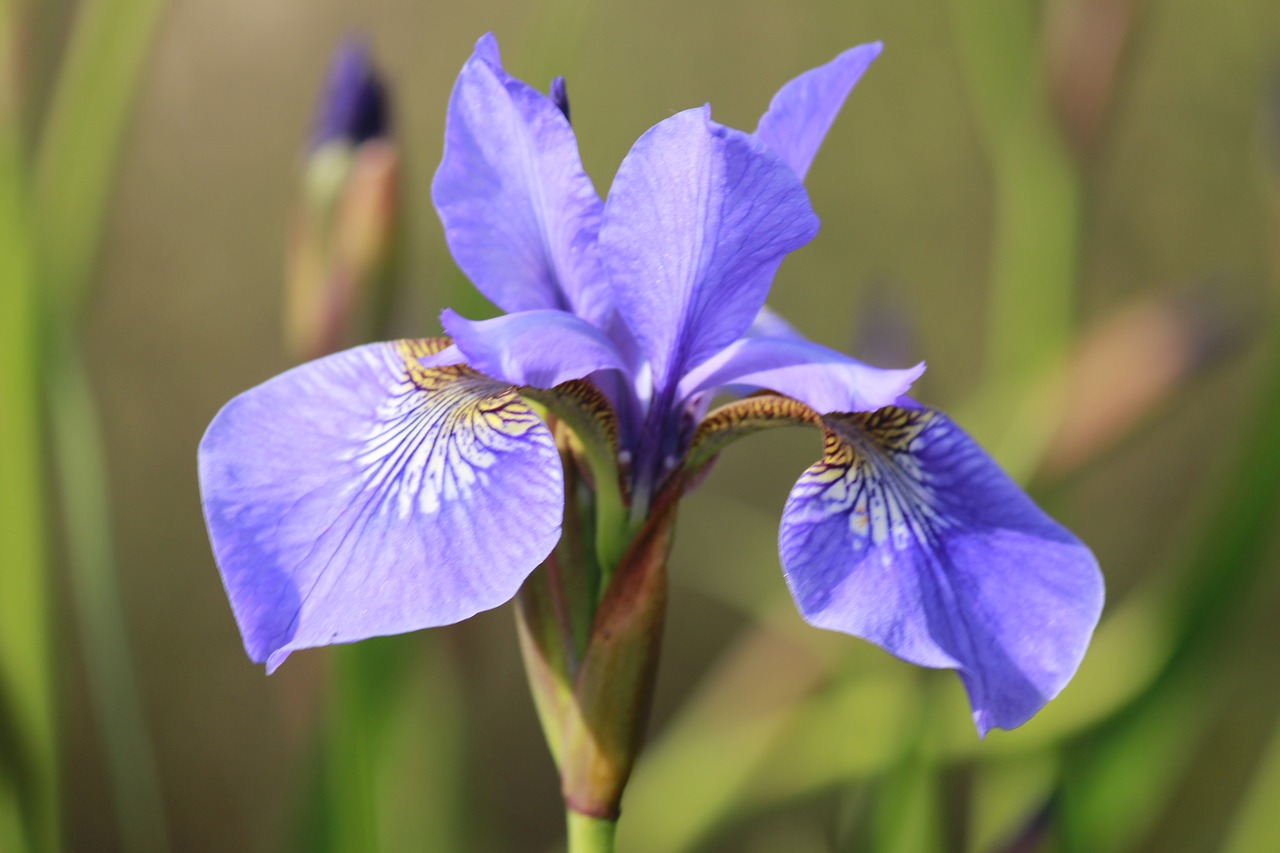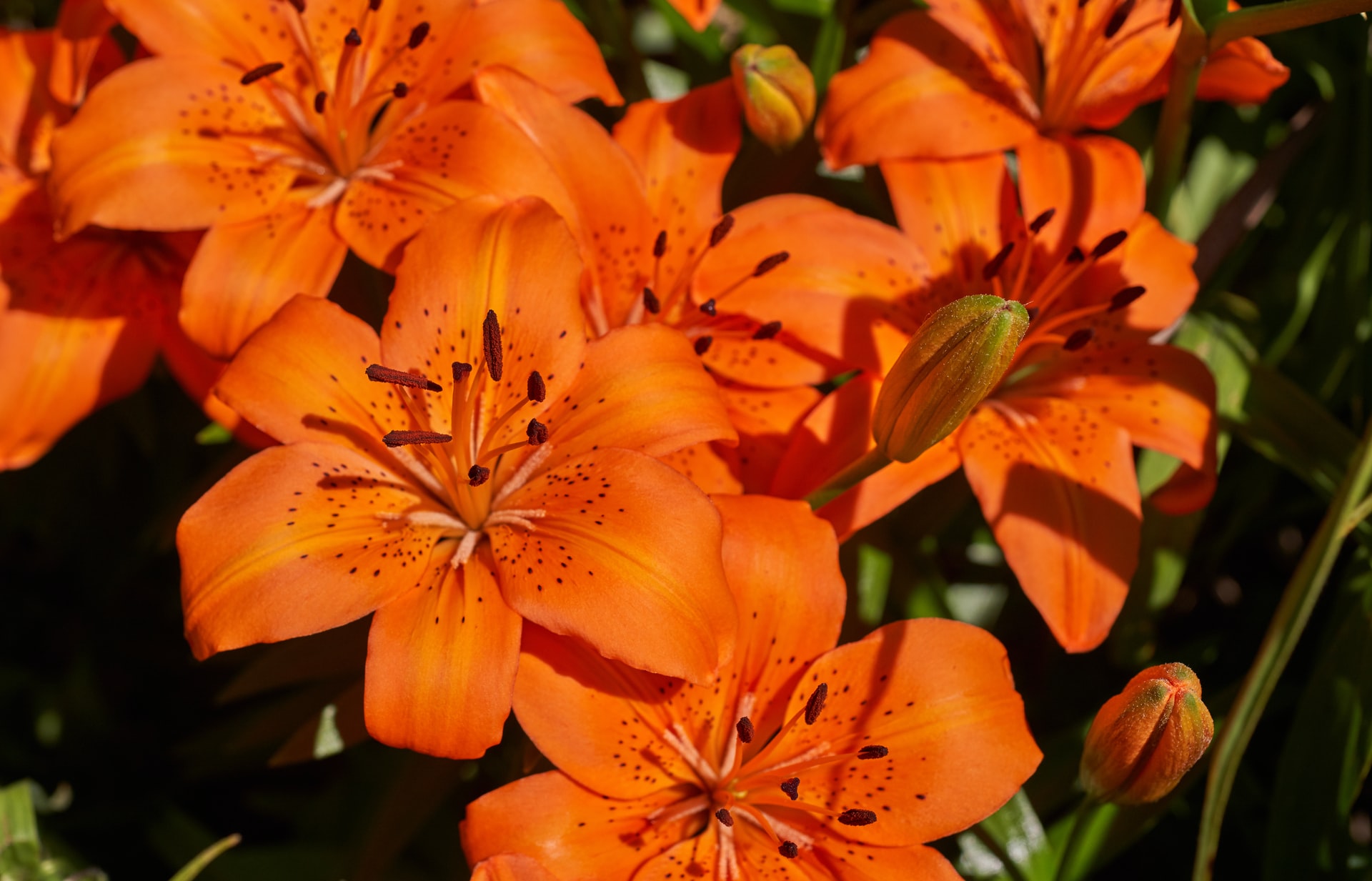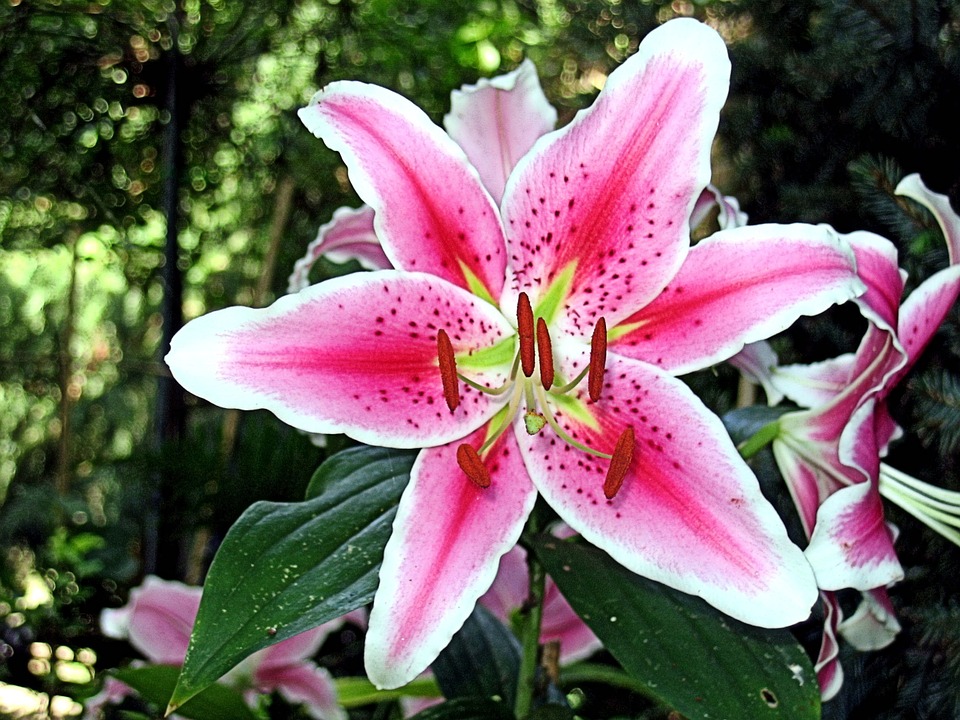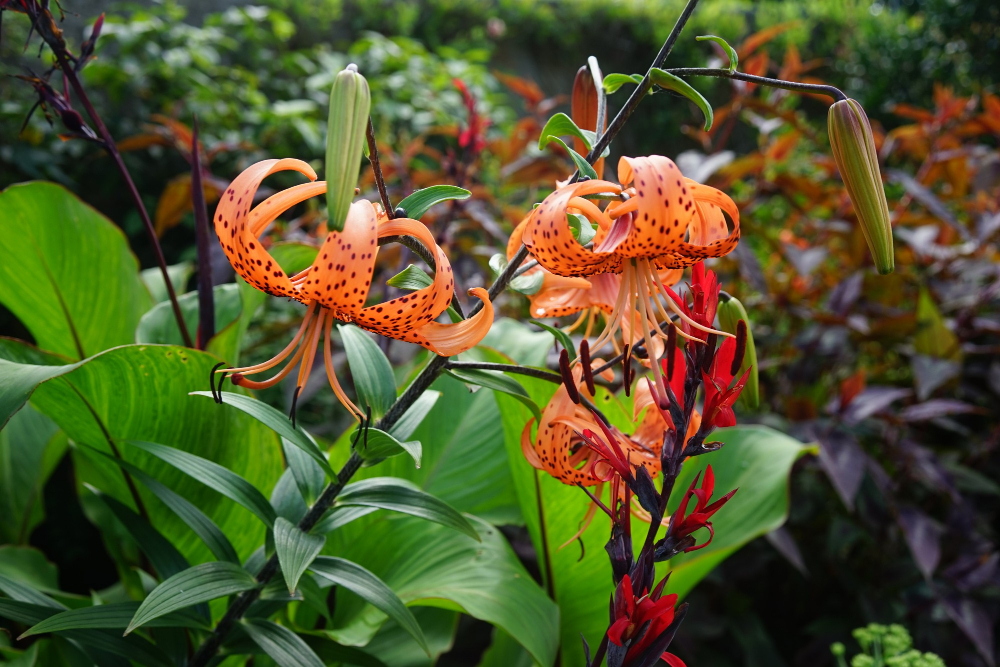
https://pixabay.com/photos/tiger-lily-purple-close-3842272/
Tiger lilies (Lilium lancifolium or Lilium tigrinum) are a food crop native to the Orient and currently grown in China, Korea, and Japan. The tiger lily bloom is most commonly orange with dark-purple or black dots, although there are also yellow, white, and purple variants. These disease-resistant lilies can be propagated by division or by growing the bulbils that form in the leaf axils.
Tiger lily is a herbaceous perennial that blooms in the summer and has strappy leaves and tall stalks with brilliant, majestic flowers. The bulbs may be planted in the fall or spring, with flowers appearing in the mid-to-late summer. The recurved orange flower petals are studded with black dots.
The blooms are edible as well, although the pollen is potentially harmful to humans. For cats, all components of the plant are extremely poisonous.
Tiger lily treatment

https://unsplash.com/photos/MUJa0G6ITbU
The tiger lily belongs to Division 9 of the official classification system for garden lilies, which also includes other pure species. L. lancifolium, on the other hand, has been cultivated for its edible bulbs for centuries and is most likely the product of centuries of breeding instead of a naturally occurring species.
The trick is to plant your tiger lilies in a well-drained place, as wet areas might cause the bulbs to decay. After that, water your lilies regularly for the first several years till their root system has grown. After that, they can withstand drought better and are rather low-maintenance plants.
The bottom section of the stalks’ foliage will perish first (in late summer). If the plants are in the rear row of a garden bed, the yellow leaves will be less visible. Cut the stems down to ground level and discard them once all of the leaves have creased by late fall.
- Light
Tiger lilies, like many other flowers, love to thrive in the sun. These hardy examples, on the other hand, aren’t nearly as picky about their growth circumstances as many flowers are. They can withstand some shade and even benefit from it during the intense afternoon heat.
- Soil
You may need to modify your soil with compost or humus to ensure appropriate soil drainage for the bulbs. Mixing peat moss, sand, or straw into the beds will also help with drainage and moisture retention. Otherwise, tiger lilies may grow in a variety of soil types, though they prefer rich, slightly acidic soil.
- Water
Tiger lilies require an average amount of water. Although mature plants can withstand some drought, they still need regular watering. If your location receives consistent rainfall, it should be plenty to keep them happy. You’ll probably have to water your plants when the soil is too dry.
- Temperature and humidity
Tiger lilies bloom after the final frost in the spring and then go dormant in the fall and winter. The temperature shouldn’t be an issue as long as you stay inside their growing zones. Although the bulbs can withstand cold conditions in the ground, they will benefit from a layer of mulch around their planting place to help insulate them.
The plants thrive in both humid and dry conditions, as long as the soil moisture is enough.
- Fertilizer
Tiger lilies do not require a lot of fertilizer. Once or twice a year, a layer of compost around the base of the flower should supply all of the nutrients they require. Mulch the roots late in the spring to keep them cool during the summer. You can apply a 5-10-5 fertilizer if you want to stimulate greater blooms. Feeding these plants with an acidic fertilizer may help them flourish in alkaline soils.
Types of tiger lily

https://pixabay.com/photos/tiger-lily-flower-spring-flowers-191113/
The well-known orange tiger lily is a true species with no cultivars. L. lancifolium, on the other hand, has been crossed with other species to produce red, white, and yellow varieties. These are frequently nameless varieties, but they all feature the same black or brown markings on petals that bend strongly backward. None of the other lily species have these two features combined.
Within the Lilium genus, there are several related species and hybrids. Fortunately, they don’t all blossom at the same time. Instead, they scatter their bright colors and strong flower forms across June, July, and August. Gardeners who require a vivid array of flowers during the summer months will find them to be valuable companions.
Within the formal categorization system, there are nine different varieties of lilies, but most gardeners will be pleased with these three.
- Asiatic hybrids: These lilies bloom in June and July, with colors ranging from red to orange to yellow to white to pink. These plants are hardy and easy to cultivate, and they will reproduce and spread with little effort. The formal categorization system places these lilies in Division 1.
- Easter lilies (Longiflorum hybrids): For early spring celebrations, these lilies are typically pushed into bloom in containers. They generally bloom in mid-summer whether planted in the garden or maintained in pots for ongoing development. These lilies are classified as Division 5 and have trumpet-shaped, beautifully white blooms.
- Oriental hybrids: Oriental hybrids, such as the well-known stargazer lily, bloom in the middle to late summer and have big blooms with vibrant hues. These are more fragile plants than Asiatic lilies, and after a few years, the bulbs may lose their vitality, necessitating replacement. The blooms, on the other hand, are stunning, and many have a spicy smell that is almost as striking as their appearance.

https://www.freepik.com/free-photo/beautiful-shot-tiger-lilies-forest-surrounded-by-different-kinds-plants_10186187.htm#page=1&query=tiger%20lily&position=3
Lilies are available in many forms, including lily bouquet, flower baskets, and lilies houseplants, to suit your needs. You can choose from some reputable flower delivery Singapore to have the most beautiful and fresh flowers delivered right to your home.

Ruth is all about pet style. She’ll help you and your furry friend turn heads with the latest trends in pet fashion.






